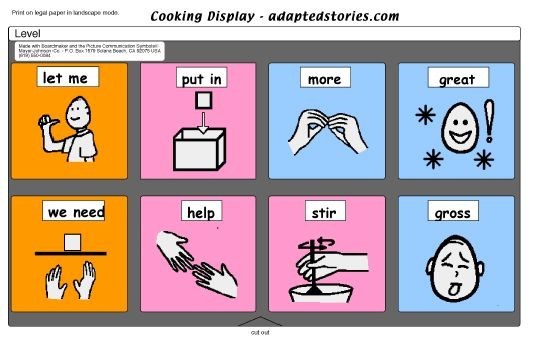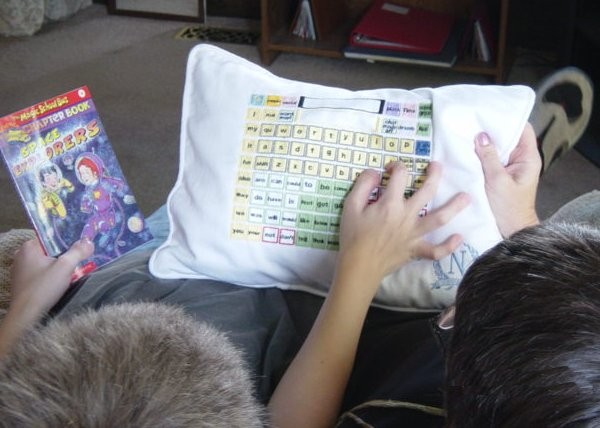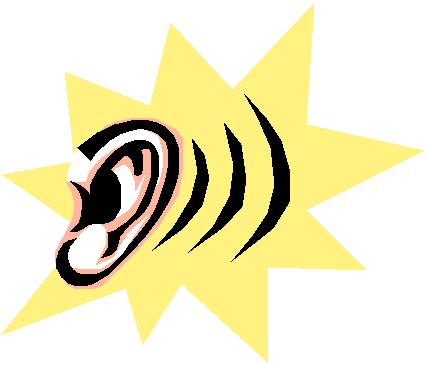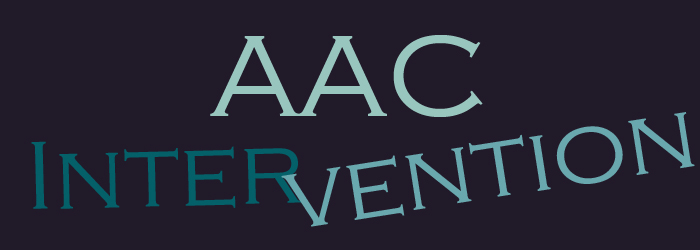
Color Coding black and white symbols
By: Caroline Musselwhite
Color Coding black and white symbols (e.g., Mayer Johnson picture communication symbols) allows the user and facilitator to locate symbols more easily. To learn more about the useful technique, use the pdf handout linked below.
January 2005
return to top


Glad Pad
By: Caroline Musselwhite
In anxious anticipation of spring, we bring you the Glad Pad - made from a garden kneeler. Enjoy this wonderful tip from Caroline and know that spring is right around the corner!
February 2005
return to top

Participation Scripts
By: Caroline Musselwhite
Students spend much of their day engaged in class activities that may offer limited opportunities for interactive communication. This is especially true in fast-paced general education classrooms. Social scripts designed for participation offer an opportunity to maximize classroom activities such as studying for a test, giving directions, or engaging in cooperative activity. For more on how to do this, click on the pdf below.
March 2005

return to top


Talking Pillow
By: Pam & Josh Harris
This ingenious pillow represents the language on the 'main page' of a communication device. Pam took a digital picture, then had an embroidery service reproduce the top page on a small, washable pillow.
April 2005

return to top

Visor Mitten
By: Caroline Musselwhite
The Visor Mitten is a device accessory that fits over the visor (sunguard) of a small AAC device. It provides a place for adding symbols to support language and literacy.
May 2005
return to top

About Graphics (part 1)
***jpg/pct/bmp/tif/png/cdr/gif***
Ever get confused about the different graphics files? Wonder which one you might use in which situation? This document gives you both beginning and intermediate information on different graphics files.
June 2005
return to top

Managing Graphics (part 2)
***jpg/pct/bmp/tif/png/cdr/gif***
What happens when you have a great idea for a multimedia project, but lack the necessary clipart to finish the job? This document gives general information about the "whys and hows" of using graphics in projects. It includes:
-
Storyboarding as a tool for organizing your project
-
Getting graphics from the internet
-
Managing "screen captures" from your display
July 2005

return to top

To Stuff or Not to Stuff...
 Stuffing/unstuffing and zipping/unzipping go beyond the question of what to do with tight clothes after a big feast. Have you ever downloaded a file that was in *.zip or *.sit, or some other compressed format, and wondered how to open it? Then, this tip is for you.
Stuffing/unstuffing and zipping/unzipping go beyond the question of what to do with tight clothes after a big feast. Have you ever downloaded a file that was in *.zip or *.sit, or some other compressed format, and wondered how to open it? Then, this tip is for you.
WinZip Free Version - a link to one of the utilities that easily manage this task!
August 2005
return to top


Sights and Sounds: Adding ZIP to Computerized Books!
By: Caroline Musselwhite
Many students with disabilities respond well to sound effects and interesting graphics in computerized books. Gretchen Hanser offers this list of websites for locating that perfect picture or sound for YOUR books!
September 2005

return to top

 Managing Sound Files through Audacity
Managing Sound Files through Audacity
To make our programs really reinforcing, whether we use Classroom Suite, My Own Bookshelf, PowerPoint, or any of a number of other multimedia authoring tools, we must carefully select both our graphics and sound files. The tips of the month from June and July 2005 address graphics, so it seems time to address SOUND files.
October 2005

return to top

STORIES IN A NEW YORK MINUTE!
By: Caroline Musselwhite and Karen Erickson

Here is a strategy that you can do TODAY so that your students have appropriate . . . and inviting . . . materials to read TOMORROW! This step-by-step approach supports developing light tech or high tech stories to support your students – especially older students who
are beginning readers. Stories may be written for or WITH your students.
November 2005

return to top


Self-Constructed Scripts
By: Caroline Musselwhite
This tip describes how an individual who uses a device with extensive language can pre-prepare a script for an activity. That script can then be stored into a highly portable step-listing device (e.g. Step by Step, Sequencer, Hip Step Talker) so that the individual has access to a self-constructed social script while in a situation (e.g. on a picnic, at the beach, lying in bed) where the high-tech device is not readily accessible.
December 2005

return to top

Our little idea guy marks the tip attachments. They are posted in pdf format. On the few occasions where there was more than one document to attach, we have "zipped" the files.
PDF File Information
Contact us if you need tips in another format.
return to top





